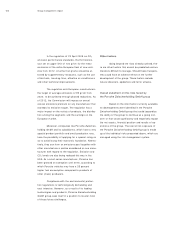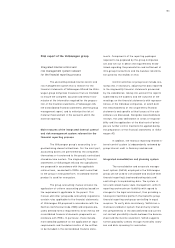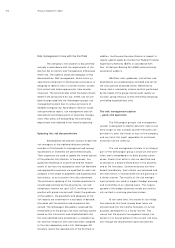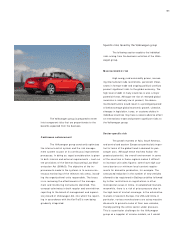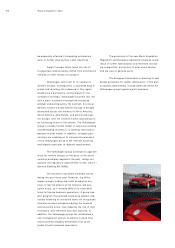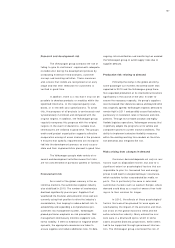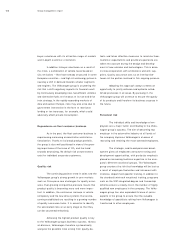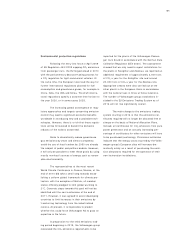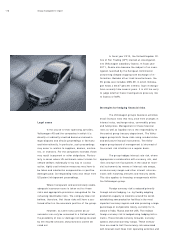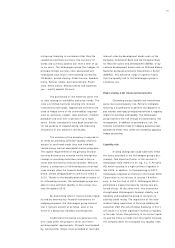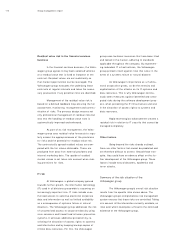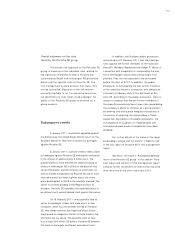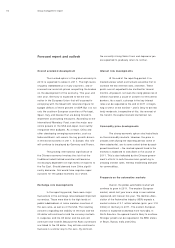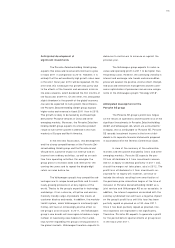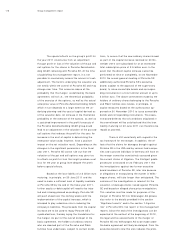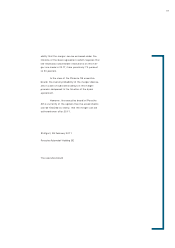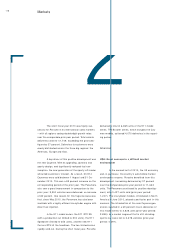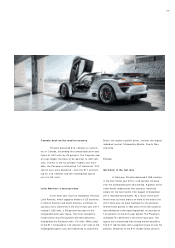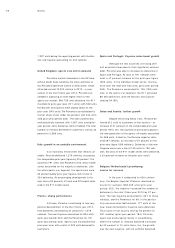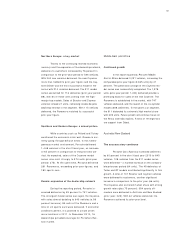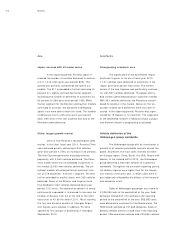Porsche 2010 Annual Report Download - page 114
Download and view the complete annual report
Please find page 114 of the 2010 Porsche annual report below. You can navigate through the pages in the report by either clicking on the pages listed below, or by using the keyword search tool below to find specific information within the annual report.Group management report
Residual value risk in the financial services
business
In the financial services business, the Volks-
wagen group agrees to buy back selected vehicles
at a residual value that is fixed at inception of the
contract. Residual values are set realistically so
that market opportunities can be leveraged. The
Volkswagen group evaluates the underlying lease
contracts at regular intervals and takes the neces-
sary precautions if any potential risks are identified.
Management of the residual value risk is
based on a defined feedback loop ensuring the full
assessment, monitoring, management and commu-
nication of risks. The process design ensures not
only professional management of residual risks but
also that the handling of residual value risks is
systematically improved and enhanced.
As part of its risk management, the Volks-
wagen group uses residual value forecasts to regu-
larly assess the appropriateness of the provisions
for risks and the potential for residual value risk.
The contractually agreed residual values are com-
pared with the fair values obtainable. These are
produced from data from external providers and
internal marketing data. The upside of residual
market values is not taken into account when mak-
ing provisions for risks.
IT risk
At Volkswagen, a global company geared
towards further growth, the information technology
(IT) used in all divisions group-wide is assuming an
increasingly important role. IT risks include unau-
thorized access to sensitive electronic corporate
data and information as well as limited availability
as a consequence of systems failure or natural
disasters. The Volkswagen group addresses the risk
of unauthorized access to corporate data by using
virus scanners and firewall and intrusion prevention
systems. It achieves additional protection by re-
stricting the allocation of access rights to systems
and information and by keeping backup copies of
critical data resources. For this, the Volkswagen
group uses technical resources that have been tried
and tested in the market, adhering to standards
applicable throughout the company. By implement-
ing redundant IT infrastructures, the Volkswagen
group protects itself against risks that occur in the
event of a systems failure or natural disaster.
As Volkswagen’s importance as a multina-
tional corporation grows, so do the intensity and
sophistication of the attacks on its IT systems and
data resources. This is why Volkswagen continu-
ously takes measures against identified and antici-
pated risks during the software development proc-
ess, when protecting the IT infrastructure and also
in the allocation of access rights to systems and
data resources.
Rapid technological advancement creates a
residual risk in relation to IT security that cannot be
managed completely.
Other factors
Going beyond the risks already outlined,
there are other factors that cannot be predicted and
are therefore difficult to control. Should these tran-
spire, they could have an adverse effect on the fur-
ther development of the Volkswagen group. These
factors include natural disasters, epidemics and
terror attacks.
Summary of the risk situation of the
Volkswagen group
The Volkswagen group’s overall risk situation
results from the specific risks shown above. The
Volkswagen group’s comprehensive risk management
system ensures that these risks are controlled. Taking
into account all the information currently available, no
risks exist which could pose a threat to the continued
existence of the Volkswagen group.
112


